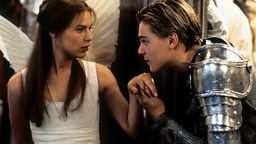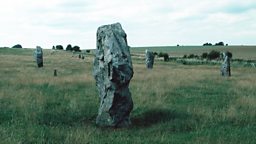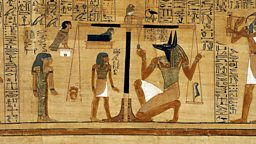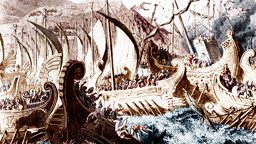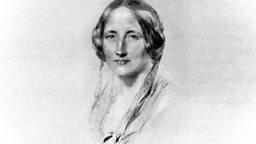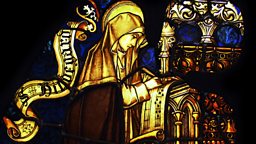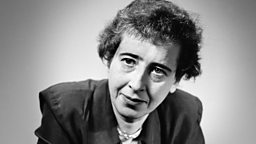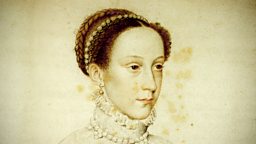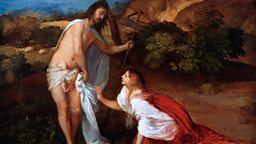Nine things you might not know about Little Women
Little Women, Louisa May Alcott's 1868 coming-of-age story of Meg, Jo, Beth and Amy March, has delighted generations of readers. It has inspired countless directors, composers and authors to make a myriad of reimagined versions ever since, with the sisters played by actors such as Katherine Hepburn, Elizabeth Taylor and Saoirse Ronan.
For Radio 4’s In Our Time, Melvyn Bragg is joined by a panel of experts to discuss the author’s fascinating and unconventional upbringing, how Little Women is credited with starting a new genre of fiction for young adults, especially girls, and why its legacy is still relevant today.
Little Women
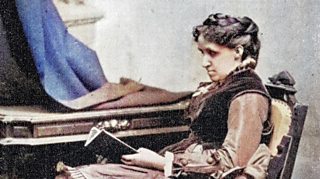
Podcast: Melvyn Bragg and his guests discuss Little Women
1. Little Women is modelled after The Pilgrim's Progress
The novel takes place over one year, in which the father of the family is absent, having left home to serve as an American Civil War chaplain. He leaves behind a very female-centred household: the four sisters, their mother, and servant Hannah.
“It is modelled after Pilgrim’s Progress,” explains Erin Forbes, Senior Lecturer in African American and U.S. Literature at the University of Bristol. Each sister identifies a clear moral flaw they have, which they try to overcome over the course of the novel. Meg’s is vanity, tomboy Jo’s is a terrible temper, Beth is extremely good but shy, and Amy is selfish and vain.

2. Like the novel鈥檚 sisters, Alcott was nearly on the poverty line
The March family aren’t destitute, but they are poor enough that the girls need to go out to work to earn money. This element of the novel is heavily influenced by the author’s own childhood.
Louisa May Alcott grew up in Concord and Boston with her three sisters and eccentric parents. Their father Bronson, an intellectual and educator, was famously useless with money. “He wasn’t a good financial support for his family,” says Bridget Bennett, Professor of American Literature and Culture at the University of Leeds. They were broke, and Alcott sewed and taught to make a living.
3. Little Women is a product of transcendentalism
The Transcendentalist movement was a group of writers and artists in New England with three ideas in common: nature is a unity, mankind is innately good, and rationality is less important than insight and revelation. “Bronson was one of these people and he lived these ideas,” explains Tom Wright, Head of the Department of English Literature at the University of Sussex.

Throughout her life, Louisa criticised her father. “She may have felt, when she was starving in the winter because these ideals weren’t working, that she was the victim of transcendentalist ideas,” suggests Tom, “yet I think those ideas are still there in Little Women and we can see that work as a transcendental work.”
4. The novel is influenced by the American Civil War
The Civil War ran from 1861 to 1865, immediately before Little Women was written. In the book it’s only spoken about peripherally but, as the reason the father is absent, it’s the thing that allows the novel to happen.
Louisa May Alcott herself was profoundly affected by the war. She was desperate to enlist, but as a woman she was forbidden. So, as soon as she became 30 and it was legal, she became a war nurse. She wrote an account of her time in hospital which was “light-hearted but also profoundly shocking,” says Bridget Bennett.
5. Little Women contains nods to the sensation stories Alcott loved to write
Alcott was a prolific writer. She wrote over 200 books and her works, many written under pseudonyms, are still being discovered. “What she loved to write most of all in the period leading up to her writing of Little Women were sensation stories,” explains Erin Forbes. These were thrillers, mysteries and Gothic tales with themes of betrayal, revenge and forbidden romance.
When we read Little Women through the lens of this “lurid style” we can clearly see “a darker ribbon running through,” suggests Erin. For example, when the sisters boycott their chores for the day and forget to feed Beth’s canary, the bird dies. This foreshadows a poor family’s baby dying in Beth’s arms and, ultimately, the sister’s own death.
6. Alcott was pressurised into writing the book
A publisher called Thomas Niles spotted a gap in the market: there was fiction for teenage boys but none for girls. So, he approached Alcott and urged her to fill it.
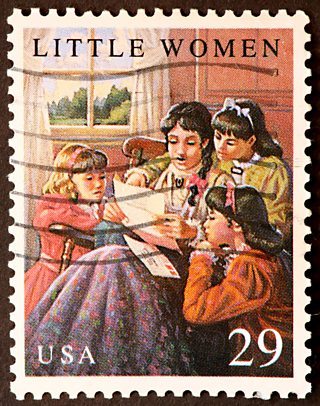
“She was having none of it,” Tom Wright explains. “She was making far more money doing sensation fiction and gaining a serious life for herself.” But Niles told her that if she wrote the novel, he would publish her dad’s book of philosophical fantasies and speculations. “She was manipulated then into writing to save her dad’s career and to save her family’s fortunes.”
Alcott wrote 400 pages in 12 weeks. She thought it was rubbish, and the publisher agreed, but his daughters loved it – so Little Women was published.
7. Little Women is actually two books
Alcott was heavily leant on to provide a sequel. Fans were desperate to know who the girls would marry. And so, she wrote a follow-up, published in 1869, in which the girls grow up. (Unhappy that she was being urged to marry Jo off, she made a funny match for her, to an older, bearded German professor.)
“It sells 20,000 copies in the first few weeks,” says Tom Wright. “People across all walks of life and genders were saying, ‘Have you read Little Women?’” Jo worshippers were flocking to Concord to knock on Alcott’s door.
“This book that she didn’t want to write suddenly became one of the late 19th century’s key cultural and literary phenomena.”
8. It was the first young adult fiction for girls
Little Women is credited with starting a whole new genre of young people’s fiction. “Reviewers spot that it’s immediately something totally new,” says Tom Wright. “It’s a kind of young adult fiction that’s not speaking down to its audience.”
“This idea of a novel that takes very seriously the lives of highly individual girls, young women, and focuses simply on their domestic adventures and their development of their characters is something that’s new with Little Women and that influences a whole range of children’s literature that comes afterward,” says Erin Forbes.
It’s women’s development – spiritually, emotionally, intellectually – that’s at its heart. And it raises the expectations of women: “Underneath this very placid surface… young girls are being encouraged to see female agency, female independence,” says Tom.
9. The first film of Little Women was British
Despite its popularity, Little Women didn’t go straight to the stage because the Alcott family wouldn’t let it be adapted. It was not until the 1910s that it hit Broadway, where it was a runaway success.
The first film was a silent one, made in Britain in 1917. There was then another across the pond in 1918, and “every decade there’s a new version of Little Women that has the hallmarks of what each generation wants to see in it,” says Tom Wright.
